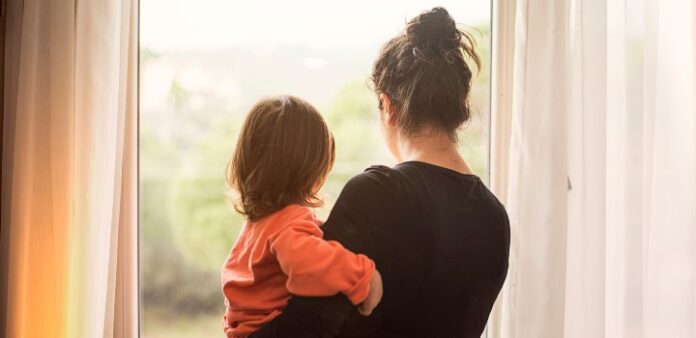Women and single parents are likely to be most negatively impacted by COVID-19 and the pressures it is putting on social housing, according to researchers at the University of East Anglia.
Women make up the majority of those in social housing and early evidence suggests the pandemic has hit them harder in the job market – particularly those on low incomes. Moreover, lone parents are likely to lower their working hours with children being at home since the lockdown. A reduction in the household’s only income means that a surge in demand for social housing seems inevitable.
Dr Emiliya Lazarova, associate professor in economics, and Pierre Bruton, a third year undergraduate student in UEA’s School of Economics, attempt to raise awareness of these issues by drawing on data they have collected over the last three years on the stock of social housing in local authorities as well as the average waiting time applicants face before receiving housing.
They combine this with regional employment data and industry evidence, and find that local authorities with a high proportion of single parents and people working in industries struggling as a result of COVID-19 will be the most strongly impacted, facing a large rise in demand for social housing. They say authorities will have to target those in need to appropriate housing and reduce the period it takes for the application process to complete.
Presenting their findings in a new blog articlefor the School of Economics, Dr Lazarova said: “COVID-19 has spread globally but its impact across industries, ethnicities, ages and genders has been felt very differently and we may see a widening of gender inequality.
“The pandemic has had a big impact on female-dominated industries and with children at home requiring attention, women and lone parents have been faced with the greatest struggles. As schools reopen in September, there is urgent need for social housing. However, the rise in demand could vary across different local authorities.”
The authors show there is substantial variation between the most common industries worked across local authorities and in the percentage of the population working in them. They also find that proportionally more females work in industries that have been worst hit by the pandemic. For example, while only 44 per cent of those in banking, finance and industry are female, the adversely affected public administration, education and health industries have a predominantly female population.
“We see that the gender employment gap may be a worsening issue in certain areas,” said Dr Lazarova. “As many government support schemes such as the furlough scheme are being wound down, evidence highlights that women, and especially those with children, are already experiencing a drop in working hours. Therefore, women are likely to be working less and receiving a lower income. For lone parents without the support of another income earner in the household, this is a pressing issue.”
While they use evidence from local authorities in London and Norfolk, Dr Lazarova and Mr Bruton say the issues they raise have implications more widely.
Mr Bruton said: “If the government allow flexibility within their policies, permitting local authorities to work to their needs, we will see efficient housing allocation suitable to the demand of their population. This means that policies such as ‘Build, Build, Build’ may provide more appropriate support for each locality in the long run, but targeted measures are needed here and now.
“In this climate, we need to be aware that women may be more negatively impacted by the consequences of COVID-19. If left unaddressed, gender inequality is set to worsen significantly. Providing suitable and flexible social housing is an urgent requirement now.”
A greater proportion of lone parents rent in social housing compared to the private alternative – 86 per cent of these households are headed by single mothers. Therefore, the COVID-19 impact on women could be problematic for local authorities with many lone parents.
The authors observe that out of low-income families, the percentage of children with lone parents in London is generally higher than in Norfolk. In Barking & Dagenham, for example, there are many single parents and a large proportion of the population work in a struggling industry. As a result, many might struggle financially, and social housing demand may rise significantly.







